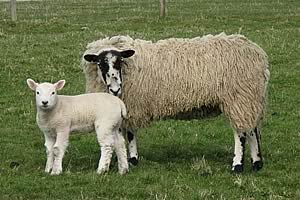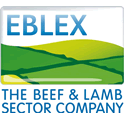30/06/08
Despite one of the best spring lamb seasons in recent years British producers need to do their sums very carefully before putting ewes to the tup for early lambing this summer, advises EBLEX Ltd, the industry body for beef and lamb levy-payers in England. Especially so given the soaring cost of feed and other inputs.
As anticipated at the beginning of the year, the early lamb market saw far less disruption from old season carryover than originally feared. Particularly tight domestic supplies of new season lambs – with throughputs down 17% on the same period last year – coupled with a weakness of sterling that made imports markedly less and exports markedly more competitive meant a very strong early lamb market.
Indeed, from the start of this season to the second week in June lambs averaged 179p/kg liveweight – a full 43% up on last year and 18% higher than 2006 – making outputs of around £103/ewe possible for the typical EBLEX Business Pointers early lambing enterprise compared with just £74/ewe in 2007.
This welcome increase in returns was, of course, partly offset by the 37% increase in feed prices recorded by Defra over the year. This and other input price rises can be calculated to increase average Business Pointers early lambing costs by 13%, pushing total costs – excluding the non-cash element – to £93/ewe. At the same level of technical performance, therefore, the 2007/8 season is likely to have delivered a positive net margin of £10/ewe for the benchmark enterprise against a loss of £7/ewe the year before.
When planning ahead EBLEX cautions that exchange rates can change very rapidly, leading to greater import competition as well as more lambs to be handled by the domestic market due to lower exports. Equally, the relative buoyancy of this season’s market could easily encourage a significant increase in supplies next spring.
At the same time, many flocks are likely to encounter noticeably higher feed, fertiliser and fuel as well as other input costs over the coming winter. All the more so where they were able to buy forward for the past season ahead of the worst of last winter’s price rises.
The markedly higher average costs of early lambing and the fact that feed represents nearly 30% of total costs against under 20% in other flocks makes these enterprises particularly vulnerable to rising input costs. For example, a further input cost rise of around 10% would be sufficient to all but eliminate the profit for the typical Business Pointers enterprise even if this season’s high prices were to be repeated in 2009.
Under these circumstances, EBLEX stresses it is more vital than ever for individual flocks to do their own breakeven budgeting with realistic assumptions on feed and labour costs, in particular, so they plan their production and marketings carefully ahead of tupping.
 Builth Wells Ram Sale Organisers Optimistic Builth Wells Ram Sale Organisers Optimistic
 Beef and Sheep Margins Under Pressure Despite Rising Prices Beef and Sheep Margins Under Pressure Despite Rising Prices
 National Suffolk Sheep Sale Postponed National Suffolk Sheep Sale Postponed

|





